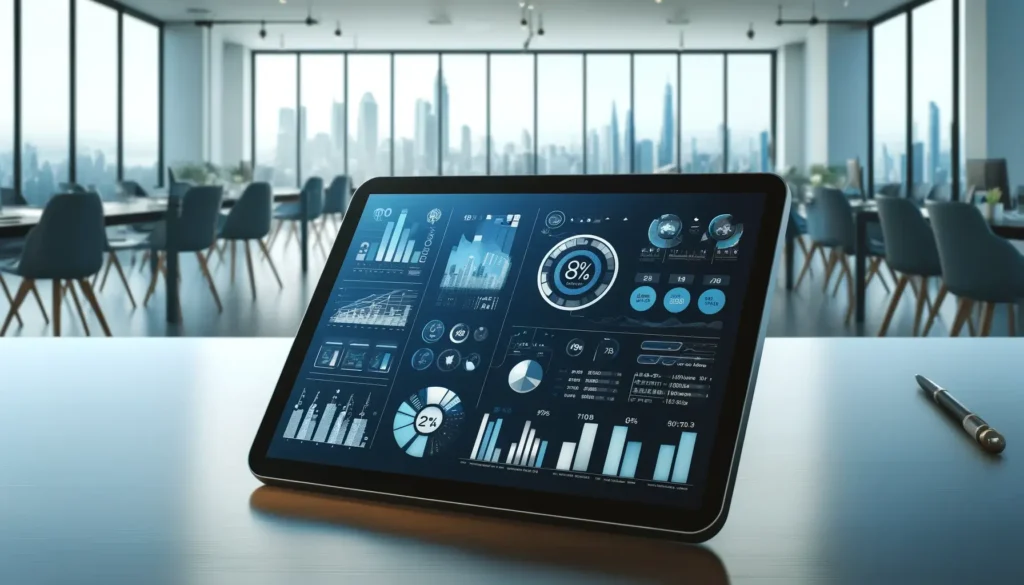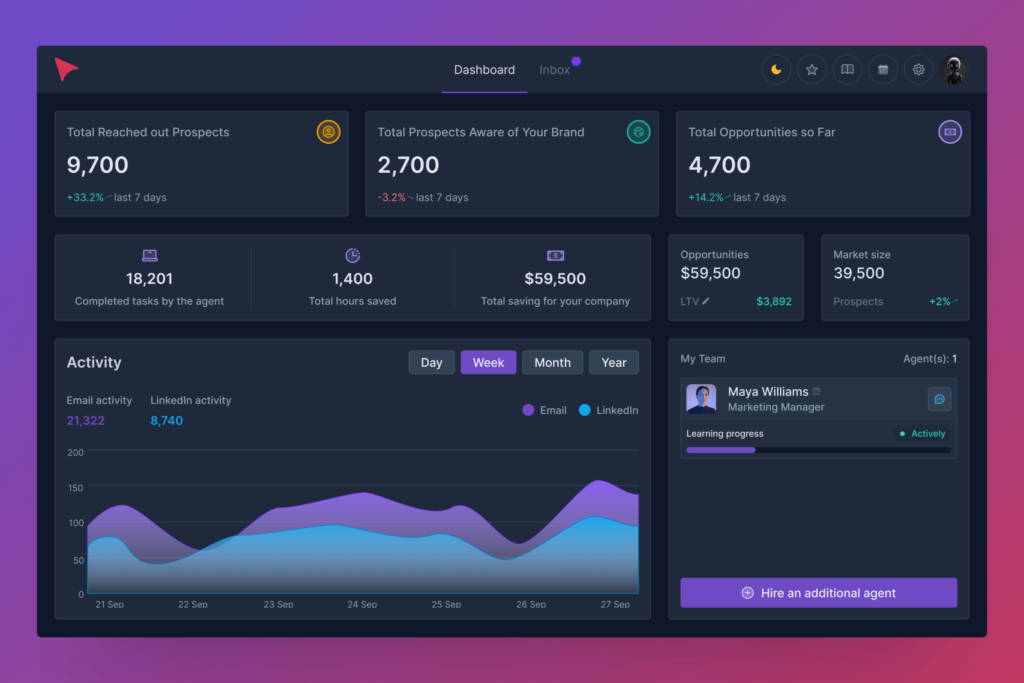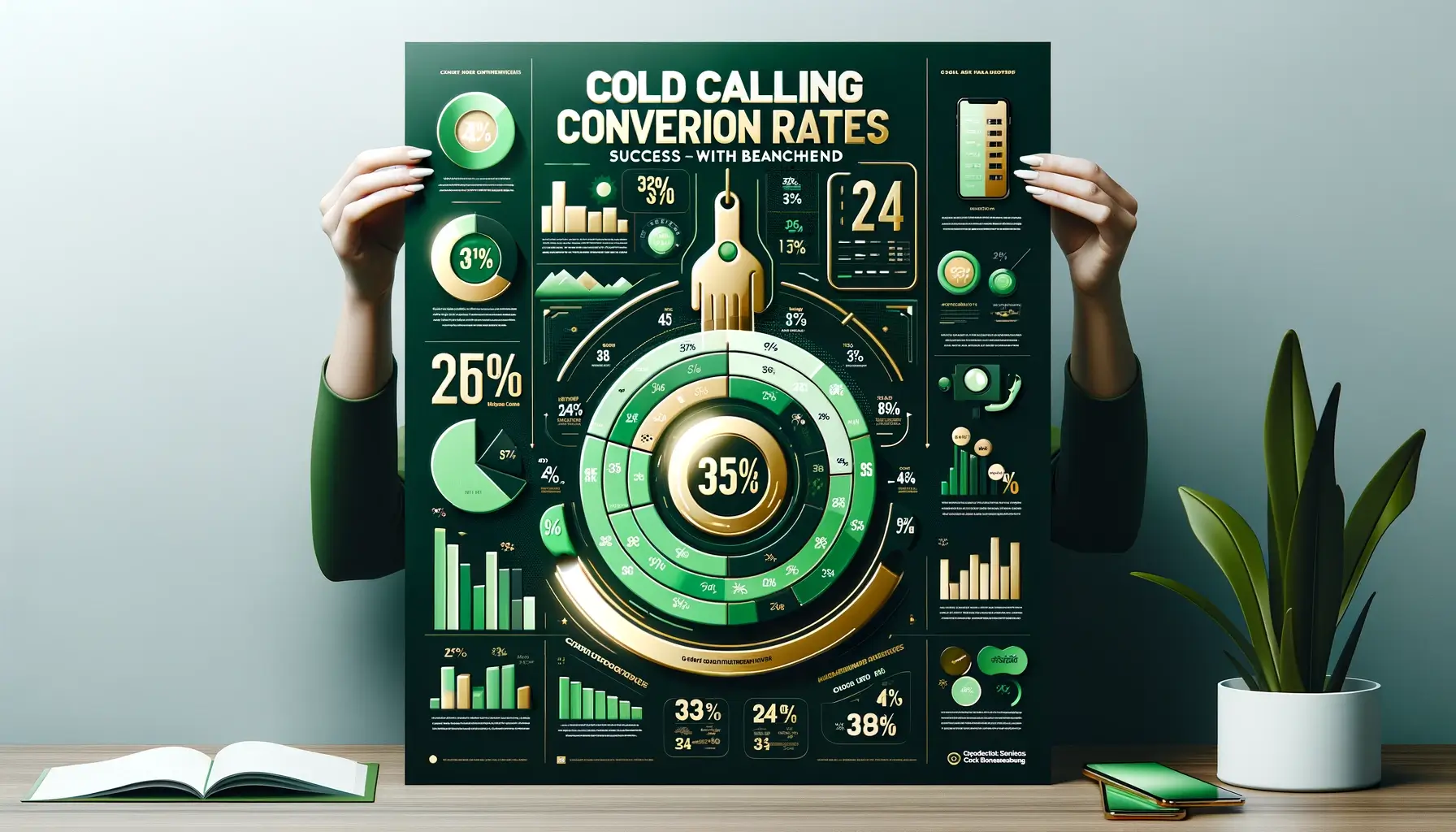Ever wonder why cold calling is still a mainstay of sales techniques anywhere in the world even in this day of digital communication? Unquestionably effective in attracting new clients, cold calling has its difficulties. Though just over 2.5% of cold calls end in a productive meeting, salespeople still find great value in this age-old technique.
Fundamentally, cold calling is contacting prospective clients who have not previously shown interest in the goods or services being offered. Its value is indispensible since it enables companies to interact with prospects directly and grow their clientele. This approach is about starting discussions, finding possibilities, and developing connections that may grow over time—not just about closing deals.
Gaining better results in this high-stakes game of numbers and negotiating requires an understanding of these conversion rates and their consequences.
Current Cold Calling Conversion Rates
Even while cold calling is frequently seen with suspicion since it is so direct and sometimes invasive, done well, it may still be a successful sales tactic. Right now, the success rate of cold calling is only slightly over 2.5 percent worldwide. This indicates that, for every 100 calls placed, about two to three lead to a meeting or a strong lead—a figure that may initially appear depressing.
But these figures start to tell a different tale when compared to industry standards. In software and technology, for example, when decisions have high stakes and products can be complicated, the conversion rate can reach up to 3.5%. The rate may, however, fall somewhat below the average in more transactional sectors like retail or consumer products.
Sales teams need these standards to comprehend and evaluate their own performance. Putting one’s conversion rates up against industry norms can reveal a lot about how well a team handles the difficulties of cold calling and point up possible areas for development.
List of cold calling success rates broken down by various industries
- Financial Services. Typically sees higher conversion rates, around 3-5%. This industry values personal communication and often requires trust-building through direct interaction.
- Real Estate. Success rates can also be around 3-5%. The personal touch in property-related discussions significantly enhances conversion potential.
- Software and Technology. Conversion rates in this sector are generally around 2-4%. The complexity of products means decision-makers are often open to discovery calls that can help solve their technological challenges.
- Business Services. Varies widely but averages around 2-3%. Services that can demonstrate clear ROI in the call tend to convert better.
- Consumer Goods. Lower conversion rates, typically 1-2%. The market is often saturated, and products might not require as much consultation, leading to lower engagement.
- Healthcare. Conversion rates can range from 2-6%, depending heavily on the type of service or product being offered and the regulatory environment.
- Manufacturing. Around 2-3%, as calls often need to be highly targeted and relevant to the specific needs of the business.
- Retail. Tends to be on the lower side, around 1-2%. High competition and high volume of calls can make it challenging to break through the noise.
- Insurance. Generally sees moderate to high success rates, about 2-4%. Like financial services, the insurance industry benefits from more personalized sales approaches.
- Education. Conversion rates can vary but generally around 1-3%. Cold calls need to be particularly well-targeted to decision-makers in educational institutions.
- Hospitality and Travel. Rates are around 2-3%. This sector often deals with offers that can be time-sensitive, influencing the receptiveness to calls.
Read also – B2B Cold Calling: Killing 20 Techniques & AI Tools
Key Cold Calling Statistics

Effectiveness of Scripted vs. Natural Conversations
Scripted calls tend to provide consistency and compliance, especially in regulated industries, but natural conversations often yield higher engagement rates. Studies suggest that a blend of both, where initial contact is scripted with room for personalized interaction, can increase success rates by up to 10-20% over purely scripted calls.
Follow-Up Statistics
Persistence is key in cold calling. Data shows that while a single call might convert only around 2% of the time, following up at least five times can push conversion rates to 8% or higher. This highlights the critical nature of follow-up in the sales process.
Technology Adoption in Cold Calling
Approximately 70% of successful sales organizations use advanced CRM tools to enhance their cold calling efforts. These tools help in segmenting data, scheduling calls, and tracking follow-up activities, which can increase conversion rates by up to 30%.
Regional Variations in Cold Calling Success
Geographic factors play a significant role in cold calling success. Urban areas might exhibit a quicker but less patient response pattern, requiring faster engagement tactics, whereas rural areas may show higher receptiveness to longer conversations.
Impact of Caller ID and Spam Labeling
With the increase in spam labeling and caller ID technology, up to 80% of cold calls might be ignored if they come from unrecognized or suspicious numbers. Implementing strategies like local presence dialing can improve answer rates by making the calls appear local to the recipient.
Effect of Call Timing on Decision Makers
Timing can drastically affect the success of a cold call. Calls made early in the morning or late afternoon, particularly on Tuesdays and Thursdays, are more likely to reach decision-makers, with an increased probability of setting appointments during these times.
Best Times for Cold Calls
The most effective times for making cold calls are generally between 10 AM and 2 PM on Wednesdays and Thursdays, when potential customers are more likely to be receptive and available.
Interested in details? Check out our article – Cold Calling: Best Day & Time Chosen by AI
Daily Call Volume
To maximize success, industry standards suggest making between 60 to 80 calls per day, depending on the complexity of the product or service and the length of the sales cycle involved.
Customer Sentiment
A significant portion of customers, about 63%, find cold calls annoying. This statistic underscores the necessity of diversifying outreach methods and integrating other communication channels like emails and social media to enhance response rates and reduce reliance on cold calling alone.
Additional Insights
- The average success rate of cold calls leading to appointments is roughly 1-3%.
- Up to 50% of sales go to the vendor that responds first, highlighting the importance of timely follow-ups.
- Nearly 80% of calls go to voicemail, suggesting the need for effective voicemail strategies.
Enhancing Conversion Rates with AI
Cold calling with artificial intelligence (AI) is completely changing the way sales teams approach potential clients and greatly improving efficiency and conversion rates. The powers of AI enable wiser, more calculated decisions that are more likely to have favorable results.
Large volumes of data are analyzed by AI technology in cold calling procedures to find patterns and insights that people might overlook. This can entail forecasting consumer behavior, evaluating leads’ possible interest levels, and ranking calls according to chance of conversion. Through the automation and optimization of these procedures, AI helps sales teams concentrate their efforts more efficiently and raise their chances of success.
AI-Optimized Sales Scripts
Sales scripts can benefit greatly from AI refinement efforts. AI algorithms can recommend changes to scripts that more effectively engage prospects by examining historical call data, client feedback, and successful conversion rates. To better connect with various audience segments, word choice, tone, or point order may all be changed. By personalizing each call, this customisation raises the likelihood of a favorable response.
Choosing When and How to Contact Prospects
AI can also examine interaction patterns to ascertain when to make calls to get the most interaction. AI systems may predict the days of the week, times of day, and even certain dates when prospects are most likely to be receptive by looking at data from past successful calls. This deliberate timing guarantees that calls are made at the optimal time to be answered and interacted with, therefore boosting productivity and efficiency.
Sales teams that use AI can improve their quick conversion rates as well as constantly learn and modify their tactics in response to new discoveries from AI research. Better sales performance and client satisfaction follow from the more intelligent and responsive sales process that this dynamic approach to cold calling creates.
Benefits of Automating Cold Calling with AI
Increased Efficiency. AI automates routine tasks like dialing and scheduling, freeing up sales teams to focus on engaging effectively with prospects.
Scalability. AI allows businesses to handle more calls without proportionally increasing staff, facilitating easy scaling of operations.
Cost-Effectiveness. Automation reduces the cost per call and optimizes resource allocation, leading to lower customer acquisition costs.
Higher Conversion Rates. AI enhances conversion by providing sales reps with real-time insights and personalized conversation strategies based on individual prospect data.
Enhanced Customer Interactions. AI tools analyze customer responses and adjust approaches in real time, ensuring interactions are more personalized and potentially more satisfying for the customer.
Eager to learn more? Our related article has all the answers – How AI Cold Calling is Better Than Human: Tools + Tips
Introducing AnyBiz: The AI-Driven Revolution in Lead Generation

In the fast changing field of business-to-business sales, AnyBiz is a ground-breaking platform created to revolutionize lead generation by using artificial intelligence (AI). With the replacement of Sales Development Representatives (SDRs) with sophisticated AI sales agents, this all-inclusive, AI-driven system automates and improves every facet of sales and marketing operations.
Why Choose AnyBiz for Lead Generation?
- Completely Automated System. AnyBiz handles jobs that in the past needed human involvement by using state-of-the-art AI. Everything from creating customized outreach sequences to overseeing follow-up correspondence is done with efficiency and effectiveness in mind. This automation frees up companies to concentrate on growth and strategy while the AI takes care of daily interaction.
- Continuous Operation. AnyBiz AI sales agents work nonstop, around-the-clock, unlike human agents, so your company is always up, always responsive, and always in time with the time zones of your prospects. The operating around-the-clock greatly raises the chances of interaction and possible lead conversion.
- Strategic Decision-Making. The AnyBiz platform is a proactive member of your team rather than only a reactive one. For well-informed, strategic decisions that exactly match your company objectives, it examines more than 10,000 data points every hour. Every outreach is made to increase interaction and effectively advance prospects through the sales funnel.
- Multi-Channel Engagement. The AI agents approach prospects with a multi-channel strategy. Every contact—emails, LinkedIn, Twitter, or bespoke landing pages—is tailored to the interests and actions of the prospect, guaranteeing a greater rate of reaction and involvement.
- Integration and Simplification. AnyBiz is made to fit easily into your sales ecosystem via its seamless interface with current CRM systems like HubSpot and scheduling solutions like Calendly. Your team’s productivity will increase and human labor will be reduced when automated email classification and response capabilities keep your messages flowing.

Exciting Upcoming Feature: AI-Assisted Cold Calling
Soon, AnyBiz will introduce an AI-assisted cold calling feature, taking its AI capabilities to the next level. This feature will leverage AI to not only determine the best times and scripts for calling but also to conduct calls that adapt dynamically based on the conversation flow. This promises to further increase the efficiency and success rates of cold calling campaigns, making AnyBiz an even more indispensable tool for modern sales teams.
Experience the future of lead generation with AnyBiz. Schedule a demo to see firsthand how our AI-driven platform can revolutionize your lead generation efforts, enhance your brand awareness, and accelerate your business growth. With AnyBiz, everything is AI, and everything is optimized for your success. Join the AI revolution in lead generation and transform your approach to meeting your most ambitious sales targets.
Conclusion
As we’ve explored throughout this discussion on cold calling conversion rates, success in this challenging yet crucial sales activity varies widely across industries, influenced by numerous factors from the approach used to the technology deployed. The insights into industry benchmarks and the emerging role of AI highlight a clear pathway for businesses looking to enhance their cold calling strategies.
The integration of AI into cold calling is not just an innovation; it’s a transformation that offers real, measurable improvements in efficiency, effectiveness, and scalability. By optimizing call times, refining scripts, and personalizing interactions based on detailed analytics, AI is setting a new standard for what businesses can achieve with cold calling.
In summary, while cold calling remains a daunting task with traditionally low conversion rates, the adoption of sophisticated AI tools like AnyBiz can significantly elevate success rates. These tools not only offer a deeper understanding of when and how to engage potential clients but also ensure that every call is as strategic and effective as possible. Moving forward, businesses that leverage these advanced technologies will likely see a substantial improvement in their conversion metrics, setting a new benchmark in the realm of cold calling.






